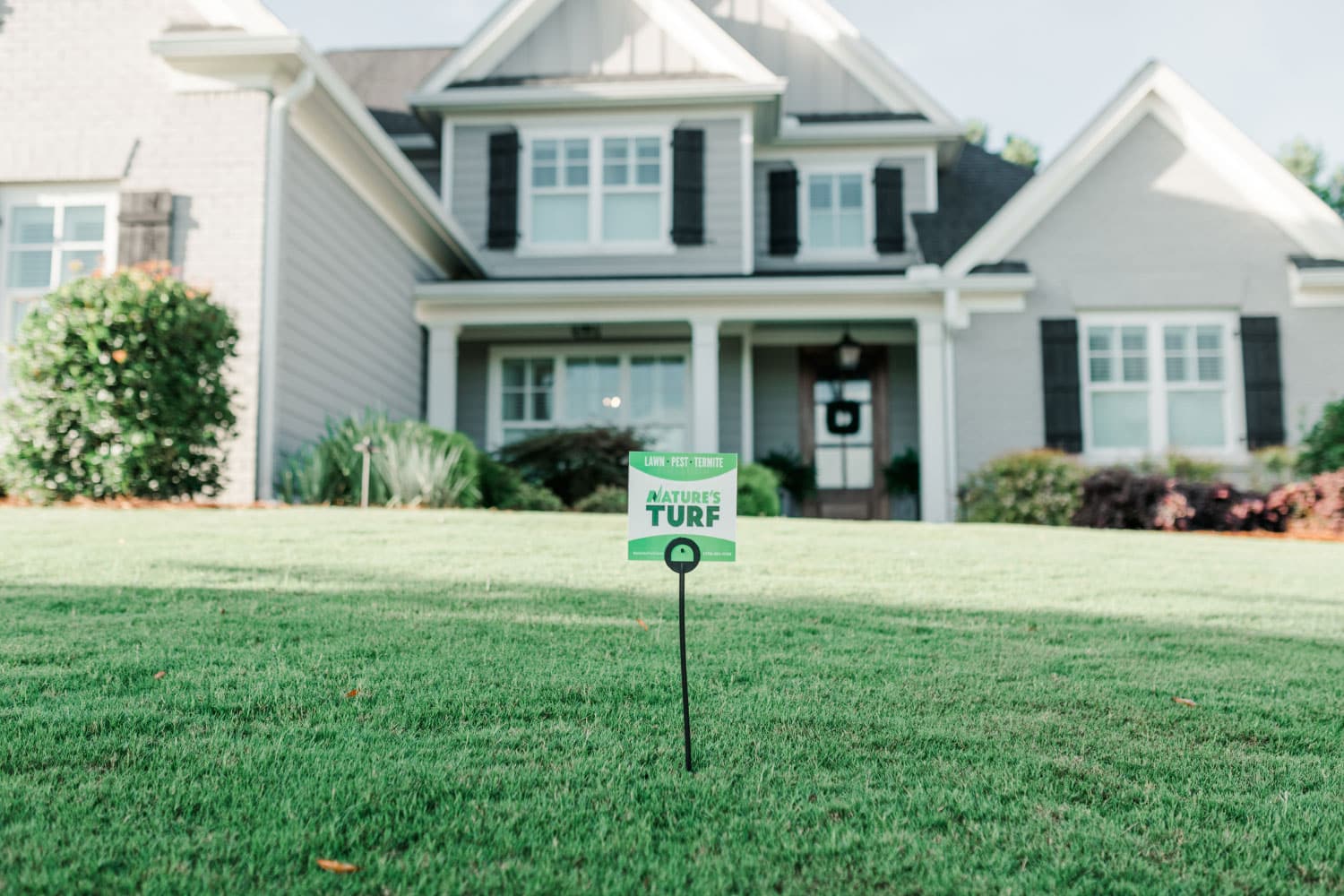The word “weeds” may have five letters, but it may as well be a four-letter word. Weeds are usually the primary reason homeowners reach out to us at Nature’s Turf in the first place. It may seem like killing weeds should be relatively easy, but it’s far more complicated than it seems at face value. In reality, weed control is a multi-faceted process that requires strategy, and the answer to the question of how long it takes weeds to die requires a couple of considerations to answer completely. Let’s dig into a couple of the primary reasons why weed control is a complex process and discuss why timelines for killing weeds vary for different weeds in different conditions.
How Do Herbicides Work?
It’s a common misconception that weed control products kill weeds on contact. In reality, controlling weeds in a way that doesn’t harm our desired turfgrass is a marvel of scientific ingenuity. Wouldn’t it be great if we could catch weeds like bad guys, stopping them in their tracks? Since we can’t do that, we instead use well-formulated products that must be absorbed and integrated by plants to execute their function. Depending on the chemistry and the biological function targeted, this process can begin to show symptoms in hours—but could take as long as weeks in ideal conditions.
Some weed control products such as RoundUp are classified as non-selective and are integrated in the same way by all plants; these products are capable of killing any plant they touch. While they generally express symptoms fastest, they will also harm desirable plants. For this reason, their use in landscapes is generally limited to mulch beds or areas where discoloration or damage is acceptable.
More commonly used in turf stands are selective weed control products; instead of targeting an integration point shared by all plants, they aim for a specific biological function in a weed so as not to harm the desirable plants around them. The first of these products was 2,4-D, developed in the early 1940’s to control broadleaf weeds in crops such as corn. We still use this chemistry today to control weeds such as clover in turfgrass. Through time, scientists have been able to target a number of access points in both broadleaf and grassy weeds, allowing us to control weeds in our desired turfs. However, these controls are not immune to challenges.
What Challenges Weed Control?
Beyond the normal timeframe it takes for weed control products to be functional, environmental and biological challenges can prolong that timeline, making weed control seem ineffective.
- Environmental challenges are often the greatest challenge facing weed control. Some of these challenges are obvious: pop-up thunderstorms, for instance. Less obvious, however, are longer weather patterns like drought. Sometimes, stressed plants are easier to control, but severe drought may slow the growth of weeds drastically. If growth slows, the plant’s integration of a weed control product will also slow. The same is true for cold weather. All plants, even the ones that survive winter temperatures, slow down as temperatures drop.
- Some plants have physiological features that can slow or stop the effects of weed control products. Weeds like dallisgrass are perennials, meaning they re-sprout from existing roots each spring. Pre-emergents stop root formation, which means they don’t regulate existing perennials. The root masses of perennials also store energy, so it often takes repeated injury to hurt them. Weeds such as doveweed not only germinate after pre-emergents have been degraded by the environment, but they also have a waxy coating on the leaves that deter absorption.There are even weeds that combine these hurdles. Virginia buttonweed is a perennial that also possesses waxy leaves. Each weed is different. Confident identification and knowledge helps strategize control.
- Some weeds are just too similar to have a selective option. The definition of a weed is a plant out of place. Often, the most frustrating weeds are so similar to our lawns that selective weed control isn’t possible. As an example, grassy weeds like dallisgrass and poa annua can’t be controlled in fescue lawns. In our bermuda and zoysia lawns, the most challenging weeds are each other. If you find bermuda in your zoysia lawn, or vice versa, there aren’t any weed control products capable of removing the uninvited guest without injuring the host. The same can be said for centipede grass in either bermuda or zoysia. In these cases, non-selective weed control products and turf replacement are typically the only fully effective method of eradication.
Important Takeaways
This blog is meant to touch briefly on some of the challenges that we all face when controlling weeds. Each situation is unique. Here are some important points to remember about weed control:
- Killing weeds is a complex process that requires educated strategy.
- Weed control products don’t kill plants on contact. Instead, they are absorbed and used in a specific way.
- Many environmental and biological processes present challenges to weed control.
- If you ever find yourself with questions or frustrations concerning weeds in your turf, feel free to give us a call at 678-831-6343 or send us an email. We’d love to get to the bottom of your weed troubles and help you strategize solutions.








